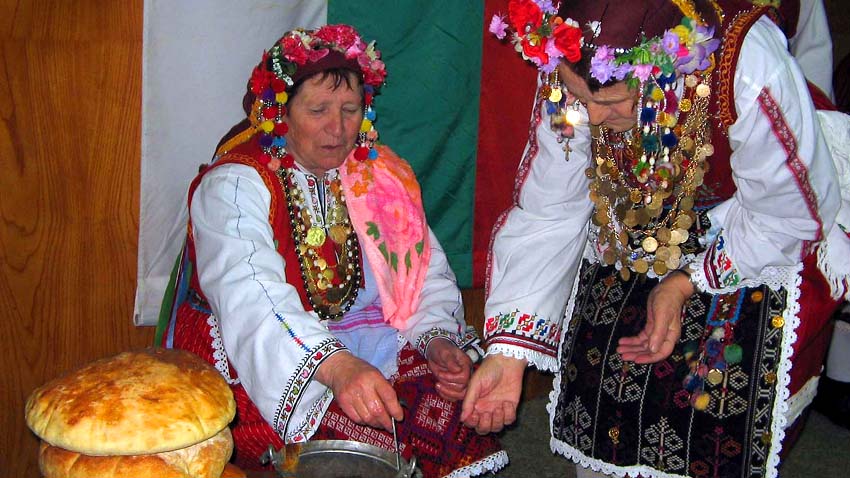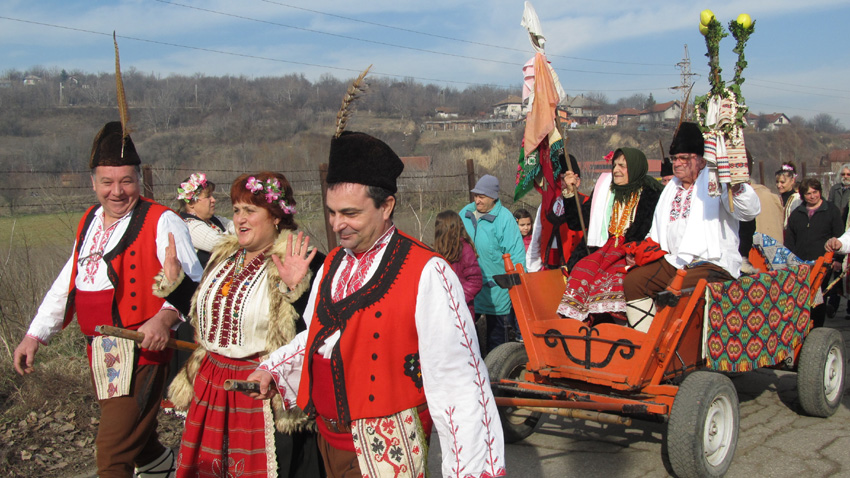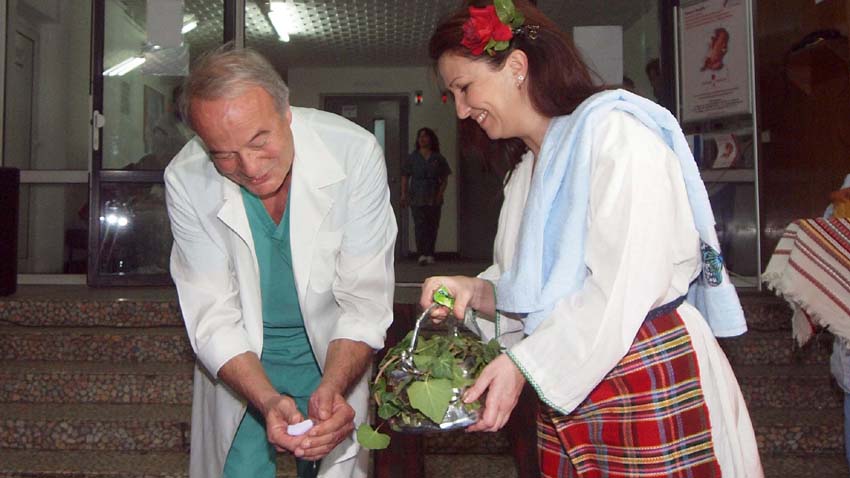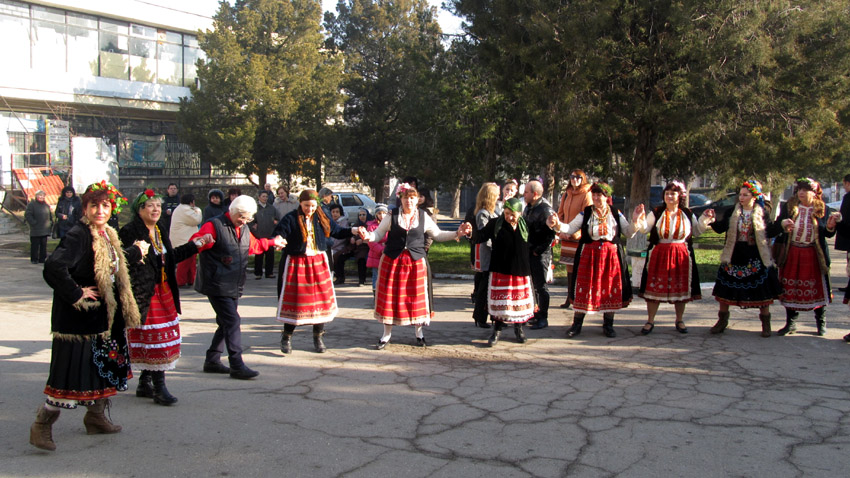
The figure of the granny occupies a special place in Bulgarian folklore culture. She plays the role of intermediary between the human world and the yonder world where newborns come from. Childbirth itself is seen as a dangerous and critical time – for the woman, who as the saying goes “has one foot in the grave” as well as for the baby. That is why the role of the granny is so important and why she has to meet so many requirements. According to traditional rules, she has to be an elderly woman who has stopped giving birth and has broken with intimate relationships. That makes her ritually “clean” and gives her the right to act as midwife. Midwives are also though to be connected with the Holy Mother of God – the celestial patron of motherhood and children. It is no coincidence that before the birth, the midwife says the ritual phrase: It is with the hands of the Virgin that I do my work, not my own. And what is most important of all is that the “granny” has mastered the traditional and magical skills of precipitating the birth and alleviating the pain. Using herbal infusions, massage and special rituals she helps the baby into the world and then cuts the umbilical cord with a knife or a sickle. The “granny” has another important task – that of keeping the mother and baby safe from evil eyes.

Granny’s day begins at dawn. That is when midwives start visiting the homes where they have delivered babies throughout the year to bathe and bless the children. Sometimes they place white wool on the babies heads when they are girls and on their beards when they are boys, all the time chanting: “May you grow white as the white wool, may you grow old as Rila mountain and the Balkan Range, may you grow as healthy as the geranium.” And they wished the brides: “May you be as sweet as honey to your husband.” Then the bride would pour water for the granny to wash, making a gift of a towel and soap. The granny would let the soap slip out of her hands, so that the baby may “slip” out easily – i.e. wishing for an easy delivery. Around noon people would gather at the granny’s home; the women brought buns and banitsa, boiled chicken, wine and rakia. And a wild revelry would begin, symbolizing female fertility. The ritual includes many erotic and conjugal elements: songs with erotic allusions would be sung, the granny would dress as a bride and dance with a baby strapped to her back; the women would adorn her with peppers, onions, sausages. In some parts of the country masked women would make flags, resembling wedding flags, elsewhere they would act out a sexual intercourse. No men were allowed. And if anyone was to break this rule, they would be ritually abused in different ways. The revelry would end by sundown when the granny was ritually bathed in the nearest river or water fountain and the women would start a chain dance in the village square or in the tavern.

In more modern times Granny’s day has a different connotation. Prior to 1989, in socialist times, January 21 was officially dubbed Day of Maternity Care and was the day celebrated by gynecologists and obstetricians and the grateful patients would congratulate their doctors and give them flowers and gifts. But elderly women also saw it as their day and would have soirees, especially in small towns and villages. They would also enact the traditional rituals connected with Granny’s day.

Author: Ass. Prof. Dr. Vihra Baeva, Institute of Ethnology and Folklore Studies with Ethnographic Museum at the Bulgarian Academy of Sciences
English version: Milena Daynova
Photos: BGNES
The resort towns along Bulgaria’s Black Sea coast can be broadly categorized into two types: modern ones, characterized by their lively and colorful streets, and port cities with a rich history. Various settlers have passed through these port towns,..
The 14th World Folklore Championship, "World Folk 2024" , starts today and runs until August 30 at three locations on Bulgaria's Black Sea coast: Nessebar, Sunny Beach and Sveti Vlas. The event kicks off tonight at the Jana Chimbuleva Amphitheatre in the..
Esther Willems from the Netherlands continues to attract people from different cities and nationalities to her club for Bulgarian folk dances, established in The Hague and named "Zora". It was founded in 2017 and then 13 people..

+359 2 9336 661
